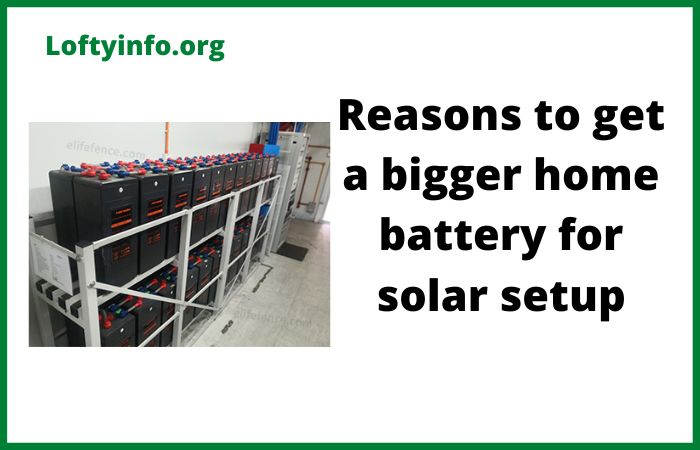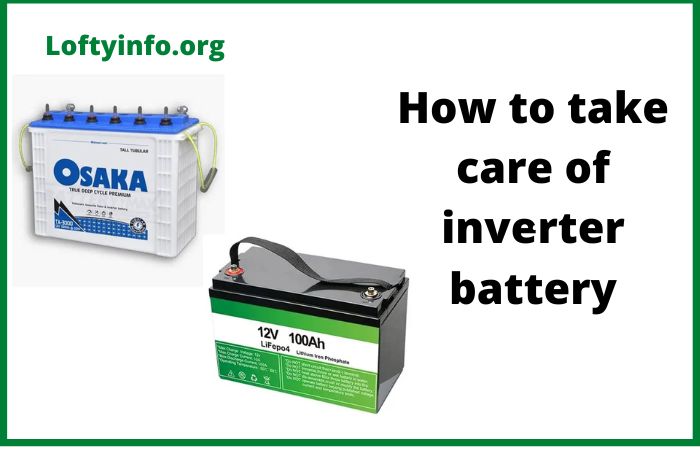Reasons to Get a Bigger Home Battery for Solar Setup
When you first installed your solar panel system, you probably calculated your energy needs based on your current consumption patterns.
As homeowners become more experienced with solar energy, many discover that their initial battery capacity falls short of their actual requirements.
If you’re finding yourself running out of stored power during evening hours or struggling to maintain energy independence during cloudy periods, it might be time to consider upgrading to a larger battery system.
The decision to expand your home battery capacity isn’t just about having more power, it’s about maximizing your solar investment, achieving true energy independence and future-proofing your home against rising electricity costs and grid instability.
Let’s explore the compelling reasons why getting a bigger home battery for your solar setup could be one of the smartest upgrades you make to your renewable energy system.
Reasons to Get a Bigger Home Battery for Solar Setup
1) Increased Energy Independence During Extended Outages
One of the most significant reasons to get a bigger home battery for solar setup is enhanced resilience during power outages.
Standard battery systems typically provide enough backup power for essential appliances for several hours but what happens when the grid goes down for days?
In regions experiencing increasingly frequent extreme weather events, hurricanes, wildfires, ice storms or heat waves, extended outages are becoming more common.
A larger battery bank allows you to maintain normal household operations for extended periods without grid connection.
Instead of rationing power to keep only your refrigerator and a few lights running, you can continue operating your HVAC system, running your home office equipment and maintaining comfortable living conditions.
This becomes particularly critical if you have family members with medical conditions requiring powered equipment or if you work from home and cannot afford prolonged interruptions.
With a bigger battery capacity, you’re not constantly monitoring your charge levels with anxiety during an outage.
You can use your appliances more confidently, knowing you have sufficient reserves to last until grid power returns or until your solar panels can recharge the system the following day.
2) Accommodating Growing Household Energy Demands
Households evolve and so do their energy needs.
Perhaps you’ve added new family members, started working from home more frequently or installed energy-intensive appliances like a hot tub, electric vehicle charger or central air conditioning system.
Each of these changes incrementally increases your daily energy consumption and your original battery capacity may no longer meet these expanded requirements.
Electric vehicle ownership in particular represents a substantial increase in household electricity demand.
Charging an EV can consume anywhere from 25 to 50 kilowatt-hours per week depending on your driving habits potentially doubling or tripling your home’s baseline energy consumption.
Without adequate battery storage, you’ll find yourself pulling more power from the grid, especially during evening charging sessions when solar production has ceased which defeats much of the purpose of having a solar system in the first place.
A larger battery enables you to charge your EV using stored solar energy captured during the day, maintaining your energy independence and maximizing the financial benefits of your solar investment.
The same principle applies to other high-consumption additions to your home, a bigger battery ensures you can power everything from stored renewable energy rather than relying on expensive grid electricity.
3) Maximizing Solar Self-Consumption and Financial Returns
Solar panels generate the most electricity during midday hours when the sun is strongest, but for most households, peak energy consumption occurs in the morning and evening when family members are home.
This mismatch between production and consumption means that without sufficient battery storage, excess solar energy gets exported to the grid at wholesale rates while you purchase power back at retail rates during peak usage times.
Upgrading to a larger battery system allows you to store more of your daytime solar production for use during evening hours.
This maximizes your solar self-consumption rate, the percentage of solar energy you actually use yourself rather than exporting.
In many areas, utility companies pay far less for exported solar power than they charge for imported grid power, creating a significant arbitrage opportunity that larger batteries can capture.
In regions with time-of-use electricity rates where evening power costs substantially more than midday power, a bigger home battery for your solar setup becomes even more financially attractive.
You can charge your battery during low-rate periods or with solar production, then discharge it during high-rate evening hours, potentially saving hundreds or even thousands of dollars annually on electricity bills.
4) Providing Adequate Power During Low Production Periods
Solar energy production varies dramatically based on weather conditions and seasonal changes.
While your panels might generate abundant power during sunny summer days, winter months, cloudy periods and rainy seasons can significantly reduce daily production.
A battery sized only for optimal conditions will leave you heavily dependent on grid power during these low-production periods.
A more substantial battery capacity provides a crucial buffer during stretches of poor weather.
If you experience several consecutive cloudy days, a larger battery can store enough energy from whatever limited production occurs to supplement your household needs, reducing grid dependency even when solar conditions are suboptimal.
This is particularly important in northern latitudes or climates with pronounced wet seasons, where solar production can drop by 60-70% compared to peak summer output.
Additionally, a bigger battery allows you to take advantage of occasional good weather days during otherwise poor production periods.
When the sun breaks through during winter, your larger battery can store more of that valuable energy, carrying you through subsequent cloudy days with minimal grid reliance.
5) Supporting Whole-Home Backup Capabilities
Many homeowners initially install solar systems with batteries sized only to back up critical circuits, refrigerators, some lights, and perhaps a few outlets.
During an actual outage, you quickly discover how many “non-essential” systems you actually depend on.
Air conditioning during summer outages, heating during winter, well pumps for rural properties, garage doors, home security systems and internet routers all contribute to comfortable, secure living.
Upgrading to a bigger home battery for solar setup enables true whole-home backup, where you don’t need to choose which circuits receive power during an outage.
Everything continues operating normally and you maintain your standard quality of life regardless of grid status.
This comprehensive backup capability also eliminates the need for manual transfer switching or circuit prioritization, simplifying operation during stressful outage situations.
For homes with special requirements such as medical equipment, home-based businesses, or sensitive electronics, whole-home backup powered by an adequately sized battery system provides invaluable peace of mind that partial-home backup simply cannot match.
6) Enabling Advanced Energy Management Strategies
Modern battery systems offer sophisticated energy management capabilities, but these features only become truly useful when you have sufficient storage capacity to leverage them.
Load shifting, peak shaving, demand charge management and grid services participation all require substantial battery capacity to execute effectively.
With a larger battery, you can implement advanced strategies like pre-cooling your home during off-peak hours, running high-consumption appliances strategically during optimal rate periods or participating in utility demand response programs that compensate you for reducing grid demand during peak times.
These opportunities for optimization and additional revenue streams become accessible only when you have battery capacity that exceeds your basic daily consumption needs.
Some utilities and grid operators also offer programs where battery owners can earn income by allowing their systems to provide grid stabilization services.
These programs typically require minimum battery capacity thresholds, and larger systems can generate more substantial revenue while still maintaining adequate reserves for household needs.
7) Future-Proofing Your Energy System
Energy technology and household electrification trends are rapidly evolving.
Heat pumps are replacing gas furnaces, induction cooktops are replacing gas ranges, and electric vehicles are becoming mainstream.
Each of these transitions represents a shift from fossil fuels to electricity, increasing household power consumption and making adequate battery storage increasingly critical.
Installing a larger battery now means you won’t need to upgrade again in a few years when you replace your gas water heater with an electric heat pump model or when you add a second electric vehicle to your household.
This future-proofing saves money on installation costs, labor represents a substantial portion of battery installation expenses, so doing it once with a larger system is more economical than multiple smaller upgrades.
Additionally, battery technology is advancing rapidly, with improvements in energy density, cycle life, and cost.
Installation costs for labor, electrical work, and permitting remain relatively stable.
By installing maximum capacity now, you capture the full benefits of current battery technology while avoiding the hassle and expense of future expansion projects.
Making the Right Decision for Your Home
Upgrading to reasons to get a bigger home battery for solar setup represents a significant investment but the benefits, enhanced energy independence, improved financial returns, comprehensive backup power and future-proofing make it a compelling consideration for many solar homeowners.
Before making the decision, carefully assess your current and projected energy needs, review your utility rate structure and consider your long-term electrification plans.
Consult with qualified solar installers who can perform detailed energy audits and provide modeling of how different battery capacities would perform for your specific situation.
The right battery size depends on your individual circumstances but in most cases, having more capacity than you think you need proves wiser than discovering your storage is insufficient during a critical moment.
Your solar system represents a long-term investment in energy independence and sustainability.
Ensuring it has adequate battery capacity to meet your needs today and tomorrow maximizes the return on that investment while providing the reliability and resilience modern households increasingly require.
Top Considerations Before Adding a Wind Turbine to a Solar Setup
How to charge inverter battery at home
Best battery for off grid solar system explained
Understanding how to get the best from your solar setup
Factors to consider when choosing battery for your solar setup explained
Top considerations when choosing the right battery size for your solar setup
Top considerations before adding more solar panels to your solar setup
Best small inverter with battery for shop
Best small inverters with battery for home
How to make tubular inverter battery last for a long time






